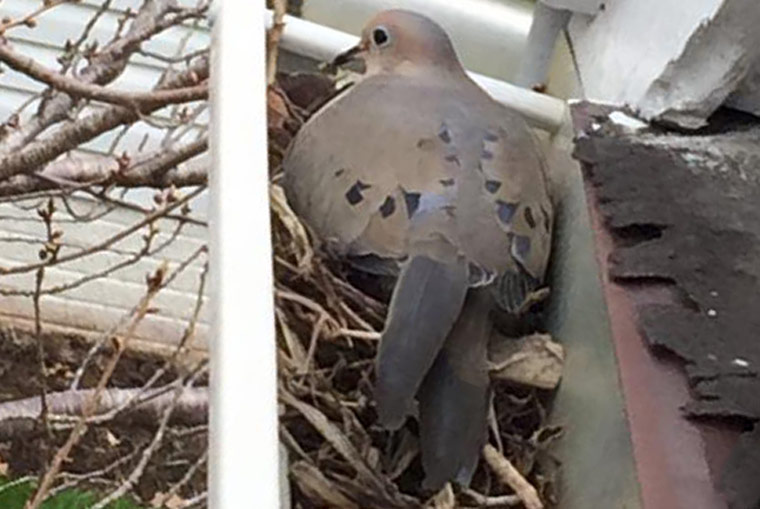-
info@aaanimalcontrol.com
Call us for help in your town
Humane Wildlife Education
What to do about a wild animal on the roof
Need wildlife removal in your hometown? We service over 500 USA locations! Click here to hire us in your town and check prices - updated for year 2020.
A wild animal on the roof will usually indicate a bigger problem. To start with, there is very rarely just the one wild animal. Rats, bats, mice, and more all live together in communal and social groups, and very often they have babies in tow. If you have bats flying around close to your attic, for example, there is a very good chance you have a maternity colony within your building. The female bats are using the space to bring up their young, because it offers them a stable, warm and protected environment. There are many of those left out in the wild now. We’re cutting down and building homes over most of the places that these wild critters would once have lived.

If you have spotted a wild animal on the roof, the first thing you’ll need to try and do is identify it. In some cases this might be quite easy. If you were to spot a raccoon on the roof, for example, in the middle of the day, you’d know it to be a raccoon because you could physically see it. In other cases you might not be so lucky. Most of these wild animals are nocturnal, so they will be most active during the night, usually when you are trying to get some sleep.
If you have heard an animal, but you haven’t seen the animal and are unsure what it is, here’s what to do:
1 - Have a good look around, at night and during the day (if you can), to look for signs of a wild animal infestation. These will include things such as feces and urine splatters, or latrine areas, commonly used by wild rogues, such as raccoons. If you find the poop left behind by the animal, you can use it to identify what the animal is. Larger poop will mean a larger animal, smaller poop will mean a smaller animal. You've already halved the possibilities already!
2 - Take a peek at the roof itself. Does it appear damaged? Where is it damaged? What kind of damage is it? Squirrels, rats and mice can easily chew through most materials with ease, and raccoons have very adept paws with sharp claws that can tear things apart. A tiny hole could be a sign that mice and rats have moved in, but larger patches of damage will, once again, usually point to a larger animal … or a much bigger infestation than you first thought.
3 - Take a wander around your home. It won’t be long before you find those tell-tale signs of an animal invader, and they’ll be in your home because there is food, water and shelter nearby. If a raccoon has moved in, you might find the critter has taken a fancy to your garbage can, and keeps knocking it over in the middle of the night. Rats and mice tend to enjoy cereal and fruity-based delights, so if your cereal boxes have been worked on in the kitchen, you’ll soon start to have your suspicions over what is causing it.
Once you know what wild animal problem you have, you can take the steps necessary to get rid of it, and prevent the problem from coming back. What you can’t do, however, is try to solve the situation blind and information-less.
You will need to do some research before you do anything. If the bats are females in a maternity colony, you won't be allowed to move them during the spring and summer months. It is actually illegal to harm them, or try to move them, so by doing so you could land yourself in rather hot water with the boys in blue. It is illegal to use certain traps in certain States across the US, and the rules really do change from state to state. This is why we would always advise that you use a professional when you come across a wild animal on the roof. They know the legalities and rules in each state, and they’ll have, not just the right information for the job, but the right tools also.
For more information, you may want to click on one of these guides that I wrote:
How To Guide: Who should I hire? - What questions to ask, to look for, who NOT to hire.
How To Guide: do it yourself! - Advice on saving money by doing wildlife removal yourself.
Guide: How much does wildlife removal cost? - Analysis of wildlife control prices.
animals in the attic
noises in the attic
Three Successful Approaches to Removing Squirrels on the Roof


















